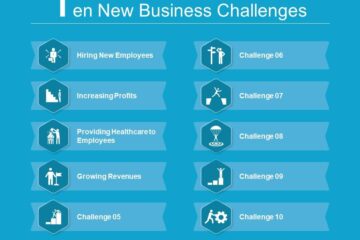The assembly elections for 40 seats in Goa will be held on February 4 and results will be announced on March 11.
The Bharatiya Janata Party (BJP) and Maharashtrawadi Gomantak Party (MGP) notched up a victory in the last assembly polls and removed the Congress from power.
In 2017, the ruling BJP-MGP faces a challenge from the Arvind Kejriwal-led Aam Aadmi Party (AAP), which has promised to get “special status” for Goa if it comes to power.
In Goa, the AAP has named former Inspector General of Prisons Elvis Gomes as its chief ministerial candidate. 53-year-old Gomes took voluntary retirement from his government job in July last year and joined the AAP.
The ruling BJP has not announced any chief ministerial candidate for Goa.
Bharatiya Janata Party:
For the BJP, Goa is a crucial state. The party has to prove its stability in the state and has to fight any anti-incumbency sentiments. This year, it will be fighting the elections alone.
Its one-time ally, the Maharashtrawadi Gomantak Party (MGP) recently announced its split with the BJP. The MGP is expected to form alliance with other pro-Hindutva outfits including the Shiv Sena. This alliance can eat into the votes of the BJP and is likely to give the ruling party a tough challenge in several constituencies.
The BJP will contest in 37 out of the total 40 seats. In the remaining three constituencies, which have a Catholic stronghold, it will support Independents.
According to analysis, the ruling party does not have much to brag about under incumbent Chief Minister Laxmikant Parsekar other than its social security schemes.
The mining ban, incomplete State Regional Plan (land use plan), corruption, gambling and casinos, and employment issues are likely to be dominant issues in this year’s elections, say reports.
The impact of demonetisation can also affect the election this year.
Strength:
1. The BJP would like to encash the positive image of Prime Minister Narendra Modi and Defence Minister Manohar Parrikar.
2. Division of Catholic votes among the Congress and AAP can give the BJP a chance to spear ahead.
Weakness:
1. Breaking of alliance with the MGP could hamper the BJP’s chances.
2. Removal of Goa RSS chief Subhash Velingkar could dampen the spirits of cadres in the state.
3. The involvement of some BJP leaders in the mining scam taints the party’s anti-corruption image.
Congress:
For the Congress Party, the Goa elections are an important opportunity to revive its political fortunes not only in the state, but also at the national-level.
In the 2012 elections, the party’s state unit sunk to its lowest level. The Congress government led by then Chief Minister Digambar Kamat not only lost power, but managed to win only nine seats.
According to reports, the party is still divided over the candidates list and pre-poll alliance.
While a faction headed by state unit president Luizinho Faleiro is in favour of going to polls on its own strength, barring adjustments on some seats, the other faction headed by Kamat, the last Congress chief minister of the state, is advocating a pre-poll alliance with parties like the Nationalist Congress Party (NCP), Goa Forward (GF) party and the United Goan Party (UGP).
Strengths:
Decline in BJP’s popularity after Parrikar joined the Centre as the Defence Minister.
Weakness:
1. The Congress has its own share of downs as the party is yet to disclose the chief ministerial candidate for the Goa elections.
2. The grand old party could also face the split of votes with the AAP as there is a shift of Christian votes to Kejriwal-led party.
Aam Aadmi Party:
Goa is the second state that the Aam Aadmi Party is eyeing this year after Punjab. The party is hoping to gain votes on the basis of its corrupt-free image. The party has announced former bureaucrat Elvis Gomes as its chief ministerial face.
The party has also released its first part of the manifesto. Gomes has said that should the AAP come to power, it will recover Rs. 36,000 crores by putting corrupt miners behind bars. The Justice M.B. Shah Commission has estimated a Rs 36,000 crores loss owing to illegal mining.
The party is hoping to repeat the Delhi victory in Goa too. Kejriwal has promised installation of a ‘Delhi model’ in Goa if his party gets elected which means Mohalla clinics, better government schools and more facilities in the government hospitals.
Key takeaways:
– AAP’s Goa manifesto has promised corruption-free governance, pollution-free mining and tourism free from casinos, gambling, drugs and prostitution.
– Rs. 400 crore fund for the people affected by closure of mines.
– Jobs creation to those dependent on mining.
– Creation of corridor in the mining belt to put an end to the villagers transportation.
– AAP’s Goa manifesto promises houses to people of the fishing sector living along the coast.
– Ecologically destructive fishing affecting the fishing communities will be banned.
– Scrapping the amendment to the Tenancy Act enacted by the ruling BJP government.
– Scrapping the current government’s decision of withdrawing the protection given to coconut palm as a forest tree within three days of coming to power.
Strengths:
1. AAP emerges as the new option for the voters if they are dissatisfied with either the BJP or Congress.
2. AAP’s promise to eradicate corruption can give them the shift in voting pattern as the saffron party and Congress is involved in the mining scam.
Weakness:
1. AAP being a new party in the state makes it difficult for them to cut across the stronghold of other parties.
Demographics:
The Hindu population in Goa is gradually increasing. 66 percent in 2011, up from 60 percent in 1961.
Christians, who are the second largest religious group in Goa, have, however, seen a 13 percent decline in the last 50 years, from 38 percent in 1961 to 25percent in 2011.
Interestingly, the Muslim population has grown from two percent to over eight percent.
Political background of Goa:
1. Goa had become the second Indian state to elect a non-Congress government after its merger with India.
2. The first assembly elections were held in Goa in 1963. The first elected chief minister of the state was Dayanand Bandodkar.
3. Maharashtrawadi Gomantak Party ruled the state for 16 years from 1963 to 1979.
4. Internal disputes in the party led to the end of this 16 years rule.
5. In 1990, MGP joined hands with the BJP and the alliance strengthened the saffron party’s position in the state politics.
[Source:-BS]



